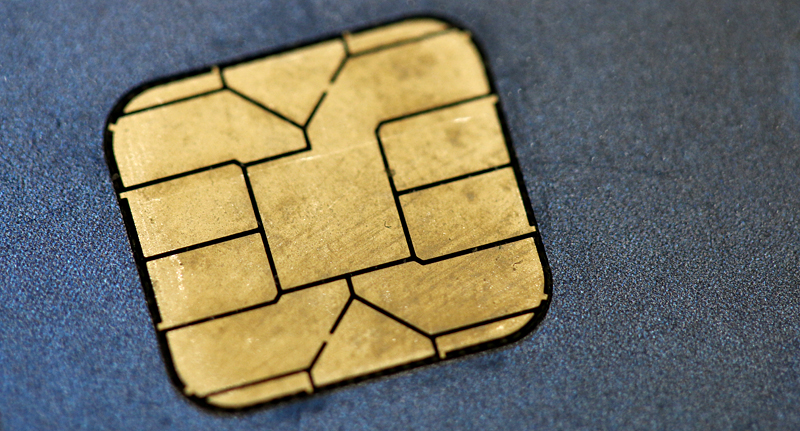Despite chips — which are designed with the specific purpose to mitigate the possibility of fraud being committed by nefarious individuals — now being embedded in credit cards issued within the United States, there is a classic scam which has been tweaked and is currently being perpetrated on holders of these more secure credit cards to steal money from them.
This chip is called an EMV, which is an abbreviation for the three companies which created its standard: Europay, MasterCard and Visa. Because the chip needs to be read in order for the secure payment process to be completed, the credit card must be inserted into a machine which can read the chip instead of swiping the credit card in a machine which reads the information encoded in the magnetic strip located on the back of the credit card.
The Scam On Credit Cards With Chips Embedded In Them
E-mail messages from scammers are now being sent to holders of credit cards with chips embedded in them with requests for additional information, according to this report written by Dana Fowle of WAGA-TV Fox 5 News in Atlanta — the same person who reported back in 2007 on the lack of cleanliness of drinking glasses in hotel rooms with a hidden camera investigation which became legendary throughout the frequent flier community.
“So now they’re sending much more legitimate emails”, said Bonnie Smyre — who is a specialist pertaining to Internet security with RAXIS — in that report. “It’s hard to tell that they’re fake. They often fake an email address so it looks like it’s from your bank. They use graphics from your bank. It looks very legit then they ask you, ‘You need to update your information. Your card is on the way, but before it can take effect we need your personal and banking information to be updated’.”
This scam could conceivably also be conducted via a telephone call — such as with this telephone call which I received eleven days ago today from a person purporting to be an employee of the federal government of the United States.
By the way, I just received another telephone call where a different caller with a different name left a voice message, reciting the exact same script. I, of course, deleted that voice message.
Remove the Number From the Face of the Credit Card?
With this and other scams seemingly being so pervasive with credit cards, I wondered why credit cards should even have the entire number printed or embossed on the faces of them anymore — especially now that secure chips are embedded in them. Just have the credit card number stored in at least one safe place. Would that not further reduce the possibility of fraud at little to no inconvenience to the credit card holder?
“Thing is, sales associates use that as a backup when other processing doesn’t work,” Bonnie Smyre responded when I contacted her with regard to the complete number being fully visible on credit cards. “And, while you might keep your card number stored in a safe place, those who don’t do that need a way for the bank to remind users of their number…more security risks there. Like many security solutions there are pros and cons.”
What You Can Do
Do not fall for this scheme by replying to the e-mail message — even if it seems to be authentic. Call the number on the back of your credit card or on your bank statement and ask if the request for information is indeed legitimate.
Just for fun, if you do want to check the authenticity of a suspect e-mail message which you received, I imparted some advice on one easy way to do that in this article which I wrote on Saturday, December 27, 2014.
Advice on what you can do to protect yourself from identity theft and credit card fraud is also available; as well as advice on what to do if your sensitive data is breached — such as with someone who steals frequent guest loyalty program points from your account, as has happened to me when my Starwood Preferred Guest account was compromised.
Summary
The unfortunate conclusion from Bonnie Smyre is that “We are a long way from truly secure credit cards.” If I may add, we also seem to be a long way from true security via the Internet in general.
If you have questions about anything which you might suspect, call the company which issued your credit card; your frequent travel loyalty program points; and any other product or service which you use that might be compromised. That is the safest and best way of not only getting the definitive answers which you are seeking; but also the most effective way to prevent or reverse the effects of fraudulent activity which could adversely affect you…
…and be consistently vigilant about monitoring the activity in your credit card — and other — accounts. Never be fully and completely trusting of any technology which uses your sensitive information.
Photograph ©2016 by Brian Cohen.

